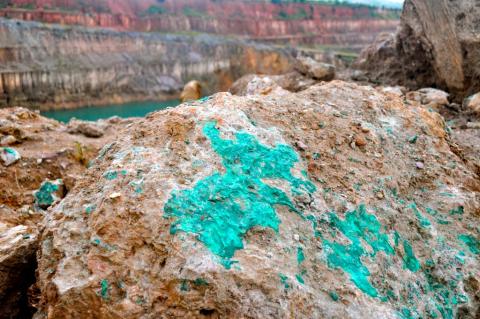
If the cleverly orchestrated campaign has worked, your city is this morning plastered with big red posters with the picture of the war criminal Joseph Kony and the two words "KONY 2012". Perhaps as likely, your morning newspaper will include an article with fiercely worded criticism of the whole campaign.
The criticisms to the famous (and infamous) Kony 2012 video and campaign remind me of some of those I’ve heard in the nearly five years of being involved with the EITI. You hear that it’s an overly simplified tool for a complex issue. You hear that it is not a magic solution. You hear that it is a northern-driven patronising solution for less-developed southerners. In the case of Kony 2012, the good American white kids saving Africans. You hear a lot about the messenger and much less about the substance.
Yes! Problems such as the resource curse, violence and human rights abuses are very complex. That is precisely why they need to be broken down into pieces that can be improved or solved one by one, step by step. In fact many public policy issues are multi-faceted and their solutions involve a huge amount of detail (where “the devil is in the details” cannot be more true). No solution to a single bit of the problem can, of course, guarantee a solution to the big issue. Arresting Kony won’t eradicate violence and end abuse in Africa. But it will be an example that abusers can be punished. Disclosing payments and revenues from mineral exploitation is not a panacea for poverty and resource wealth mismanagement, but it is a necessary condition to tackle the malaise of squandering resources that should be benefiting all.
Complex problems cannot be solved with the wave of a magic wand and what we really need is as many as possible who can contribute to cracking this hard nut. If one of the contributors is a Hollywood-prone messenger so be it. In fact what we need is many Kony 2012 campaigns, sentimentally-charged or otherwise. Style and tone are not the problem. Human rights abusers are the real problem. Same for the resource curse. The EITI, with its limitations, is not the problem. The challenge is to change the way mineral resources are exploited, distributed and used, and what is desperately required are many other solutions, modeled after the EITI or otherwise. The energy of the messenger-killers could be better spent in promoting more Kony 2012 and EITI-like solutions.
Finally, there is an important lesson here. In this interlinked world we are living in, savvy marketing tools are a double-edge sword. On one hand, they enable speedy spreading of an idea. On the other hand, they can equally create a disproportional perception of a misguided concept. The commercial scent of the Kony 2012 campaign leads many to suspect a profit motive in the endeavor.
In the case of the EITI, an independent evaluation of the EITI concluded last year that positioning the EITI brand was one of its greatest achievements, and had built a global coalition for improving transparency in an opaque sector. And this year, data from 30 countries has been released through the EITI. Yet, naysayers have had the same pitch since the ink dried on the EITI Principles soon ten years ago: "the EITI is not enough".
We know that the EITI alone is not enough, but it is better to do something than to do nothing.
Related content



Statement from the EITI Board Chair on the continued detention of Mr. Gubad Ibadoghlu
